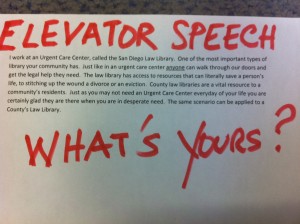Most attorneys know a lot of people. Hundreds, perhaps thousands of people–clients, former clients, attorneys, referral sources, prospects, friends and family, business contacts, community leaders. Your contact list is your most valuable marketing asset.
People who have inquired about your services are more likely to hire you than people who don’t know your name. People who have hired you before are likely to hire you again. People who have referred clients in the past are likely to refer in the future. The best way to grow any law practice is to stay in touch with the people who know, like, and trust you. Nurture this list and the people on it and your practice will grow.
But you can’t possibly give everyone on your list the same amount of attention. There simply isn’t time. And some people are more valuable to you than others. Your best client is obviously in a different category than someone who has never hired you. Someone who refers you two or three clients every month deserves more attention than someone who sent you one client last year.
You need a “Focus 30” list– a list of your 30 most valuable contacts.
These are your best clients and referral sources, your most promising prospects, the most influential and helpful professionals you know. Put their names on a list and carry it with you. Post it next to your computer. Keep it in front of you everywhere you go.
Why 30? Because experts tell us that’s about the maximum anyone can effectively work with at any one time. Whereas you will write and occasionally call the people on your master list, the people on your Focus 30 list get your personal time. You will talk to them every week, maybe even every day. You will meet with them every month. You give them your time and energy because they are the 30 most important people in your professional life.
Build or strengthen your relationship with your Focus 30. Call them, just to see how they’re doing. Send them business. Get to know their families, their employees, and their best contacts. Dedicate 80% of your time to your Focus 30 list, 20% to everyone else.
Your list will change over time. You will add people as they play a more prominent role in your life and remove those who drift away. Someone you thought deserved to be on the list will disappoint you. Someone who isn’t even on your radar today will emerge as a valuable ally tomorrow.
Your list may start out with only five or ten people. No hurry. Start with them.
When you get to thirty, you’ll need to pare some names to make room for others. Continually upgrade your list so that you focus on the best. And when you have 30 of the best, upgrade your list to the “best of the best”.
Eventually, you will have 30 people who send you so much business you won’t be able to handle it all.

















